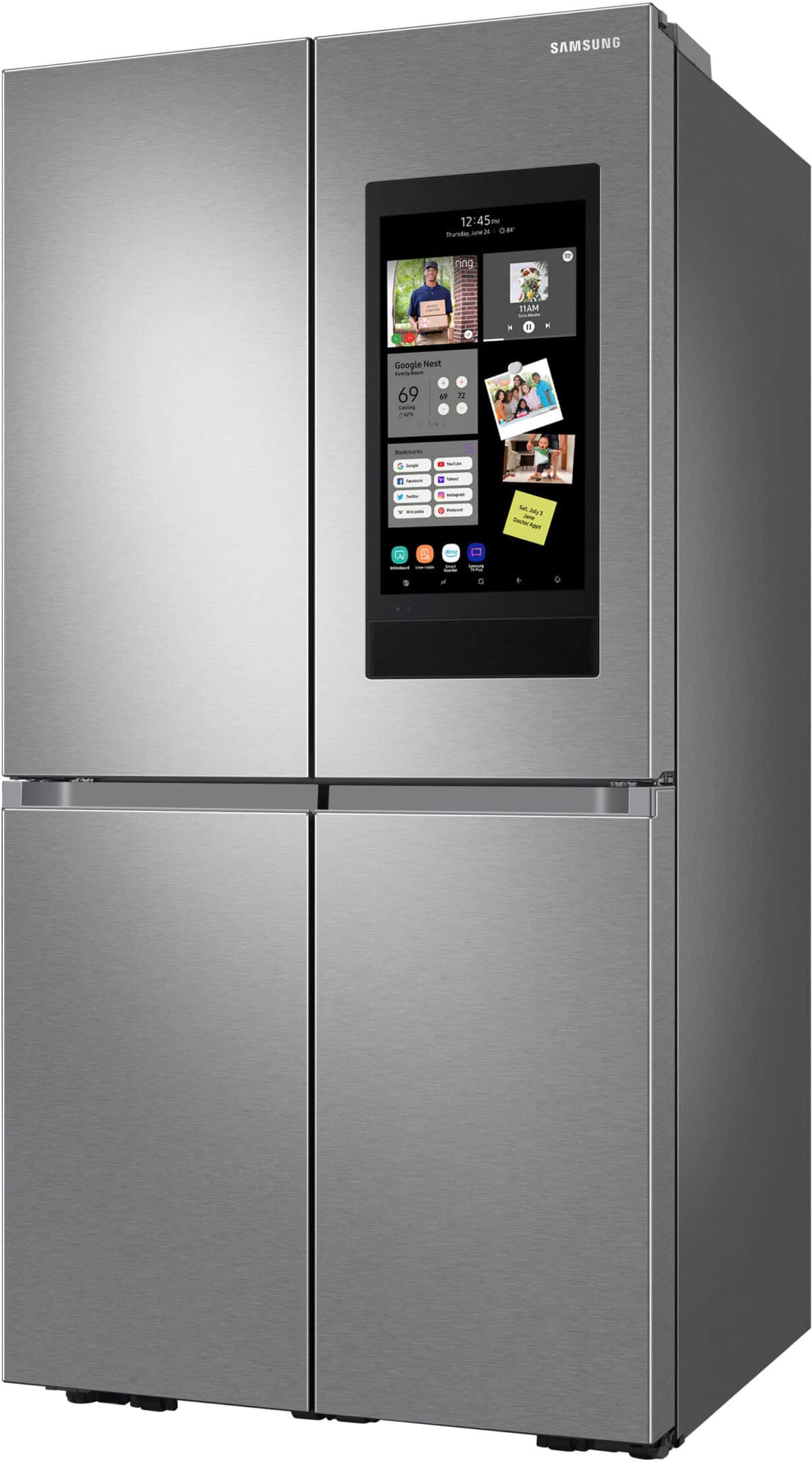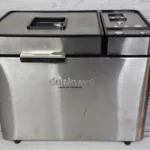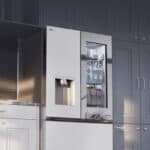Samsung refrigerators are among the popular choices for many households. Yet, they can sometimes run into problems. When a Samsung refrigerator is not working right, food can go bad. This is both wasteful and costly.
Some common issues include the refrigerator not cooling, making strange noises, or problems with freezing. It is important to handle these issues quickly to avoid more trouble.
For those running into such problems, there are guides and steps to follow to fix these issues. Many of these problems can be fixed without needing a repair person. This saves time and money. It helps to have a good guide to follow. These guides can help owners fix common problems and return their refrigerators to good working order.
Troubleshooting Your Samsung Refrigerator
Samsung refrigerators are known for their style and features. But, like any appliance, they might sometimes act up. Here’s a look at common Samsung fridge problems and how you might be able to fix them yourself.
Refrigerator Not Cooling
- Check Your Temperature Settings: A simple solution! Make sure your refrigerator and freezer are set to the right temperatures.
- Inspect Door Seals: Damaged or worn-out door seals let cold air escape. Look for gaps or tears. You might need replacement seals.
- Clean the Condenser Coils: Dirty coils can make your refrigerator work harder. Unplug the fridge and gently clean the coils at the back or bottom with a vacuum.
Ice Maker Problems
- Frozen Water Line: Look for a frozen water supply line leading to the ice maker. You’ll need to thaw it out carefully.
- Ice Maker Sensor: Ice getting stuck can jam the sensor. Clear any stuck ice.
- Check the Ice Maker Switch: It might have been accidentally turned off.
Refrigerator Leaking Water
- Clogged Defrost Drain: This drain can get blocked by ice or food debris. Clear it out carefully using warm water.
- Level Your Refrigerator: An unlevel fridge can cause water to pool near the dispenser. Use the adjustable feet to level it.
- Inspect the Water Filter: A cracked or improperly installed filter can leak.
Table of Common Samsung Refrigerator Issues
| Problem | Potential Solutions |
|---|---|
| Fridge or freezer not cooling | Check settings, door seals, and condenser coils. |
| Ice maker won’t make ice | Look for a frozen water line, jammed sensor, or check the ice maker switch. |
| Water leaking from fridge | Clear the defrost drain, level the fridge, or check the water filter. |
Important: If these tips don’t help, or you notice more serious issues, it’s time to consult a qualified appliance technician or check Samsung’s support website for further assistance.
Diagnosing Common Issues
Troubleshooting Samsung refrigerators involves checking various components for malfunctions. Here are some ways to pinpoint and address common issues.
Temperature and Cooling Malfunctions
When a Samsung refrigerator is not cooling, first check the temperature settings. They should be set around 37 degrees Fahrenheit for the fridge and 0 degrees Fahrenheit for the freezer. If the settings are correct but the fridge remains warm, inspect the coils at the back for dust. Clean coils help cool the fridge more efficiently. Look for:
- Blocked vents inside the fridge
- A malfunctioning thermostat
You might also face temperature fluctuations. Ensure the door seals tightly and the fridge is not overloaded, as this can block cold air from circulating.
Ice Maker and Water Dispenser Concerns
If the ice maker or water dispenser is not working, consider these steps:
- Check the water filter. Replace if dirty or clogged.
- Inspect the water inlet valve. It needs enough pressure to function.
- See if the ice maker assembly is functioning. If not, parts may need replacement.
Make sure there are no kinks in the water lines and that the water inlet valve is free of debris for proper flow.
Defrosting Problems
Defrost issues in Samsung refrigerators, such as excess frost, can be due to a malfunctioning defrost system, including the defrost timer, heater, or thermostat. Here’s what to do:
- Locate the evaporator coils behind the freezer panel.
- Check for frost buildup. Defrost any ice with a hairdryer if needed.
- Test the defrost heater, timer, and thermostat with a multimeter for continuity.
If these components have no continuity, they likely need replacing to solve the problem.
Maintenance and Repair Strategies
When your Samsung refrigerator faces problems, certain strategies can keep it running well. One must know how to maintain seals and use technical fixes.
Sealing and Insulation
The door seal or gasket is vital. It keeps the cold air inside the fridge. Check the seal for any damage. If you see cracks or it feels loose, it’s time for a new seal. A simple way to test this is with a dollar bill. Close the fridge door on a dollar bill. If you can pull the bill out easily, the seal may be faulty.
How to Inspect Door Seal:
- Close and reopen the fridge door to see if it closes properly.
- Use a flashlight and place it inside the fridge. If you see light through the seals, they are not tight enough.
Tools Needed:
- Flashlight
- Dollar bill
Replacement: If the door seal is damaged, replace it. You might need to contact a technician if under warranty or use a troubleshooting guide.
Technical Solutions
For technical issues like a warm freezer compartment, first check the power level. Ensure your fridge is getting the right power. Use a spirit level to see if the fridge stands level. A fridge that isn’t level might not close properly.
Condenser Coils: Over time, condenser coils can get clogged. This affects performance. You need to clean them regularly.
- How to Clean:
- Unplug the refrigerator.
- Find the coils, usually at the back or the bottom.
- Gently brush off the dust and debris.
Compressor Issues: The compressor is the heart of the fridge. If it’s faulty, the fridge won’t cool properly. Listen for unusual noises. If it sounds off or you notice performance issues, seek a professional.
For immediate support, Samsung offers live chat or phone help. Customers can get in touch with a technician for guidance. Always check your warranty. Some repairs might be covered.
Remember, regular maintenance is the key to longevity. Use the right tools, follow the guidelines, and consult a professional when needed.
Frequently Asked Questions
Troubleshooting your Samsung refrigerator can seem hard, but it’s easier when you know where to start. These FAQs will guide you in resolving some of the most common issues.
Why is my Samsung fridge not cooling properly?
First, check if the fridge is in Demo Mode, which turns off cooling. If not, ensure there are no obstructions to air flow and the temperature is set correctly.
How do I troubleshoot issues with my Samsung refrigerator’s ice maker?
Make sure the ice maker is turned on and the water line is not blocked. If it’s still not working, reset the ice maker by pressing the reset button.
What steps can I follow from the Samsung refrigerator troubleshooting manual to fix my unit?
Refer to your manual for specific steps. Often, you will begin by checking power sources and control settings and then move on to checking individual components like seals and filters.
Why is the temperature fluctuating in my Samsung fridge freezer?
Check for a blocked air vent, a door left ajar, or a faulty thermostat. Make sure your unit is not placed close to a heat source and is level with the ground.
How can I reset my Samsung refrigerator if it’s experiencing display issues?
Most Samsung refrigerators can be reset by holding down the power freeze and power cool buttons at the same time for five seconds.
What are some common solutions for a Samsung refrigerator that’s not cooling but the freezer is working?
This may be due to a faulty evaporator fan. Check that it’s operating properly. If the motor is noisy or not moving, replacement might be necessary.







